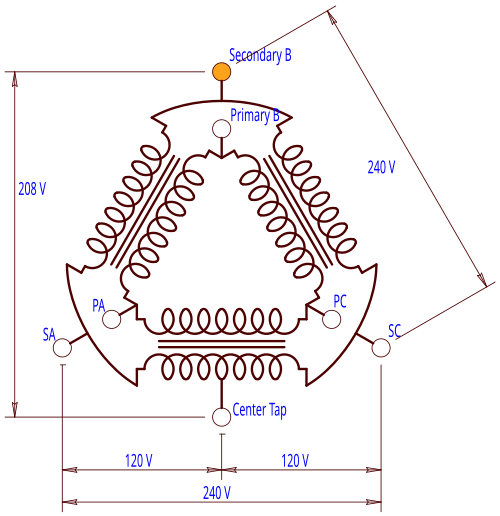dbh6
Lifetime Supporting Member
I want to verify something. Say you have a typical 3 phase 230VAC supply power. If you measure between any two legs you would read 230VAC. If you measure between any leg and neutral you would read 120VAC. Now say i wanted to power up a PLC for example with 230VAC this is ofcourse assuming the plc can handle that rating and to my surprise a lot of them are, i would then proceed to wire the L1 terminal of the PLC to one leg and the L2/N terminal of the plc to the second leg. Since the 'legs' are 120 degrees out of phase with each other or lagging in a sense the second leg in this case the L2/N terminal acts as the return path for the current, so my question is, technically speaking would that be the reason why a second leg can act as a return path?? Would the scenario be any different in a single phase as opposed to 3 phase?? feel free to elaborate.







